
Tai Chi – standing meditation (increase focus and lessen internal dialogue)
Description
In this blogpost I will write a bit about standing meditation – which is the foundation of my own daily training, and also the main reason I started learning from Master Sam Tam 12 years ago. In my book “Tai Chi, Qi Gong and Standing Meditation”, standing meditation is covered from many different angles, and I give a lot of advices for what to look out for as you progress in your practice. Therefore standing meditation represents a cornerstone and is a red thread through the book. As you probably know, I have had different teachers representing different schools and systems over the years, and as a natural consequence of that I have been exposed to different views and approaches to standing meditation.
Standing – to grow roots
Most of my teachers in the master Huang system focused on standing, with the exception of Patrick Kelly. If you wish to learn how to develop roots – have a good contact to the ground and understand “emptying” the upper body and filling the lower the body – standing on one leg is a good exercise. In various Taiji forms, you differentiate between different weight distributions: for example 51/49, 60/40 – and the most common: 70/30. In reality, none of them are correct. Apart from the beginning and the end, the form mainly consists of positions and weight shifts close to 100{5f54c39356704ba21868e0cfe81ad3b433a9ecfbeaf34a2baba388ade82df33d} on one leg.
Therefore, to practice you can take 3 to 5 minutes in the morning and again in the evening where you stand with all your weight on one leg and the other leg out in front of you. You can place your index and middle finger on a table in front of you until your body has calmed down. Once settled, move your hands off the table and stand in the position for as long as you can, without moving. All the time trying to relax and release muscle tension – from the top of the head all the way down to the feet. Like melting. This exercise is to be trained on both sides, of course. Once you are stable in these positions, you can train the raise hands and play guitar positions instead. Both positions offer a very good opportunity to train stability and letting go of upper body tension. You can also use single whip, a position that opens the joints well.
Master Huang Xiangxian and standing
Through the natural course of having a lifelong pursuit, development and change took place, depending on where master Huang was in his life. I have had the privilege to both learn from and work and train with several of his top students – both the “old school” ones and those from the last 20 years of his life.
In the 1960s and 1970s, when he still had a strong focus on the self-defence aspect of Taiji, standing was a regular part of his teaching. Positions from the form such as raise hands, cross hands, play guitar among others, as well as hold the ball and standing from the White Crane system (the system he mastered before Taiji) were included in his teaching and training. Pupils frequently stood for 20-30 minutes at a time in deep positions with all of their weight on one leg as in raise hands. To test whether they kept all their weight on one leg – in this case the back leg – he kicked their front leg.
Standing – functional
If we move more in the direction that I have been taught in Master Sam Tam’s system, I will begin by looking at standing as a source of movement. Standing can also be called functional training, because everything you learn and do in your standing should be present when you begin to move. Therefore, it is real functional training, and not the very popular but misleading term often used in regards to all possible and impossible exercises in the fitness industry. Here for example are exercises with dumbbells where you sit on an exercise ball, or you throw around with kettlebells in this and that direction under the guise that it is functional training and something special. This is of course nonsense, and many people injure themselves with this type of exercises. Functional training is simply training aimed precisely at making you better at performing the sport you enjoy – Taiji for instance.
A significant part of standing is to focus your attention on achieving a beneficial body-posture. Your back should be as straight and vertical as possible, because it simultaneously increases your awareness around being both centered and vertically balanced. You stand on your feet, and your feet and legs are the foundation that – integrated with your torso – creates the three main movements of your centerline:
Your hips makes rotation around your center line possible, your knees together with your hips and ankles allows up and down movement along your centerline, and your ankles allow for a horizontal shift forwards and backwards of your centerline.
Let us start from the bottom: You must stand with parallel feet, approximately shoulder width apart, and your weight evenly distributed between and on them. Then imagine that your head is hanging by a string from the ceiling or sky. This string does not go down to the top of the head the way it is usually described. It goes down to a point located where two lines meet. One line going from ear to ear and the other going from between the eyes to the back of the skull. It is in literature sometimes referred to as “the secret” spot in the brain. You will most likely have to pull the ears (and thus head) backwards and let the jaw and chin fall to hit the correct position.
If you imagine that the head and neck are pulling upward, then the lower part of your spine does exactly the opposite. Imagine that the sacrum and coccyx drop down. Your pelvis will tilt slightly backwards, and the spine will be slightly straighter and longer. It is often referred to as one of the methods by which you sink the energy. If you do it correctly, your torso will become integrated, making it possible for it to function as a whole.
Next, you need to have your arms up in a position that resembles embracing a big ball or balloon. Round your shoulders slightly. You do this by first pushing your shoulders out to the side – by attempting to push your collarbones out to the side – and then rounding 10-15 degrees forward from the area between the shoulder blades, not from the shoulder joints themselves. This brings your elbows slightly forward. Now turn your forearms so that your palms are facing your body, and lift them up until they are at the level of your shoulders – as if you were holding a large balloon or ball.
The rounded shape of the shoulder girdle together with the straight back makes your body fully integrated. From the feet touching the ground all the way up to your fingertips. The straight or vertical spine represents the vertical circle, rounding the shoulders and the embrace of the ball represent the horizontal circle. At the same time, the open position around the chest allows free and unrestricted breathing.
It would not be wrong to say that the level and quality of your standing give an idea of what you can expect to achieve from the rest of your training. If you’re not able to integrate your body when you’re standing still, then it is close to impossible to achieve in movement. You must learn to integrate the body in standing; then you can take this integration, attention and awareness with you into your movements.
When you move, your movements should always be circular. The two primary circular motions are vertical and horizontal. The horizontal circle is obtained through a rotation of the centreline. The vertical circle can be obtained through either an up and down movement, or as a combination of the vertical and horizontal circle e.g. moving back and forth in a bow position, where you first sink downward (vertical) and then move forward (horizontal).
In standing you surrender to the forces of gravity, but you do not let go of your structure. You can think of your bones as a hanger, and your muscles like a coat hanging on it. Imagine length in your spine with space between the vertebrae – both in front of, behind of and to the sides. Relax the lower part of the body by allowing the lower part of the spine to drop. Drop your shoulder blades – imagine that they slide down the back – and open the chest to stretch the upper (costal) region of the spine.
The duration of your standing sessions can vary. The traditional training was originally 40-45 minutes if your goal was to build good health, and an hour or more if there was also a focus on developing self-defence skills. For those who are old or have many old injuries, the duration should be increased gradually. Start with just a few minutes. There is great variation in how long different individuals can stand in the positions. Some give up at the slightest sign of discomfort; others are more stubborn and choose to stand for 45 minutes from day one, no matter the pain (that was me in the old days). Neither path leads to great development, and the latter type will never learn to let go.
When you reach a point in your standing where you want to stop, there is an opportunity for development, if you can continue just a little longer. Let’s say you feel discomfort in your shoulders. If you stay in the position for a little longer, you send a message to your brain that it hurts. Your brain will then send a message to the region to let go, which in turn will trigger a relaxation response. It is not uncommon to experience this as the joints releasing and creating more room and space. Then you can just lower your arms and leave the standing.
The elastic frame
When we are exposed to a threat or shock, the body has two ways to respond generally speaking: either tensing up and stiffening the tissues, or collapsing. Between these two extremes of involuntary response, we have the opportunity to train the elastic frame; what Sam Tam calls “your happy medium” – a relaxed body yet having structure. In standing and the internal martial arts, we attempt to make this more appropriate response, the relaxed and elastic structure, our new and natural response.
Heaviness or lightness?
Both in the first section of my book “Tai Chi, Qi Gong and Standing Meditation”,in my on line teaching program exploringtaiji.com and my face-to-face teacher’s program in the beginning the focus is on master Huang’s system, and all of the exercises and the form piece, even the standing positions, focus on building a stable and strong base, to empty the upper body and fill the lower body, and that all movements are running to and from the feet. Through my many years of only focusing on versions of the master Huang system and the Zheng Manqing system, I was taught to build this strong base. When I became a student of Master Sam Tam, things became different, and my focus shifted from experiencing heaviness to lightness.
Sinking versus dropping the energy
When I began learning from Master Sam Tam, I had been dropping the energy in all positions and movements for many years. First to my feet, and then return it through my body and hands. Like a compressed spring returning to its starting point.
Master Sam Tam told me to forget about my feet and instead imagine that I lowered the energy to my center (dantian). There were two reasons for this: First, there was a risk of damaging my ankles and knees over the long term if I had too much downward heaviness. (I actually had problems with my knees and knew several others with both knee and ankle problems). Secondly, he said, it was too slow in regards to the self-defence aspect of Taiji, one of his major areas of competence. I were to practice sinking the energy to dantian and then expand in all six directions at the same time. Up/down, forward/backward and to the sides. Like an inflating ball; and standing is a great training tool in this regard. In relation to self-defence and pushhands it is much faster and more efficient. However, first you must learn to relax, integrate the entire body and open your joints.
Standing and reverse breathing
Standing is very good for practicing reverse breathing, When you can stand and be physically and mentally connected, let go of all excess tension and are able to expand in all directions at once and understand what it means to open your joints, then you can train reverse breathing in your standing. When you exhale, expand in all directions at once – the six directions – from your center: up and down, back and forth, left and right side. As you expand forward from your center, you balance it with an expansion of the lower back. While you find yourself sinking down toward your feet, you will expand in the other direction and into your arms. When you exhale, you are expanding your chest out towards the sides.
When you breathe in, the opposite movement happens: You go from the six directions towards your center. There are several levels to go from here, but they will not make sense before the first part is trained, understood and developed. Before being able to work with and develop reverse breathing, it is a prerequisite that your abdominal muscles are relaxed and that your spine is long and straight. Having the ability to create power from your center, is not the same thing as being able to release and deliver that power. If you’re not able to maintain your “frame” – and mind you, an elastic one – it will be very difficult to focus your force in a precise direction towards your opponent.
Balls and balloons
In your standing you will use visualizations of embracing balls or balloons. In addition, it is not uncommon to also imagine sitting on them, having a ball between the knees (to prevent the knees from collapsing inward), perhaps a ball between the instep and shin, a ball in each armpit between the thorax and the arms and between the chin and the top of the chest. Sometimes we imagine that the balloons are filled with helium to experience lightness. At other times, we imagine that we embrace a wooden – or iron ball to ensure that the arms do not move forward (you do not want to drop an iron ball on your feet!). In other words, you employ all sorts of images and visualizations that can help you improve and develop the quality of your standing and help you maintain the correct positions.
The six directions
In standing your visualizations matter. In the beginning, they increase body awareness and the ability to let go, and later on they are useful when you train very specific things in your standing. At an even later stage in your development, using visualizations doesn’t matter as much anymore. When you practice standing, you can imagine that there are strings pulling in opposite directions at the same time: to the sides, up and down, back and forth. The six directions. Pulling equally in each direction, you will appear to be standing motionless from the outside.
Another variation of the six directions – slightly later in your development – involves imagining the body becoming longer, deeper and broader when pulled in the six directions. You expand, and the body gives in to the pulling. At first it might be easiest to achieve this feeling, if you only focus on two directions. For example imagine pulling on each end of your spine. Later, you can train all six directions at once. Imagining different things in the same positions, makes your training and experiences almost as diverse as if you were playing golf or football.
Structure and relaxation
Soon after you begin your standing training, you will run into the immediate paradox: maintaining structure yet letting go. If on one hand, you are very devoted to “holding” your structure or position, there is a risk that you end up building layer after layer of tension. Moreover, you will certainly not approach that which is most important: an increased awareness of yourself, your body and the ability to let go. On the other hand, if you have too great a focus on letting go, there is a risk of collapsing your body and structure. So what do you do? You take your position and then let go from the position. Sounds simple, right? It is actually quite difficult! Keep the goal in mind: “The standing is there to serve you; you are not there to serve the standing.”
There is huge difference between using just enough muscle activity to maintain a position – and using too much, resulting in your awareness and feelings of letting go shutting down. Your standing is supposed to peel tension off, layer by layer; like peeling away the layers of an onion. Do not force it or have too much focus on how long you can stand in the positions. You risk losing awareness of what is going on in yourself and your body. And thereby doing everything wrong. It can be difficult to distinguish between good and bad tension, and this is where a competent teacher comes into play to guide and mentor you.
In the old days, the traditional way of teaching was that you shouldn’t ask questions. You just had to stand in a particular position for an hour or more. After some time, when both tension and pain dominates the experience, there is only one alternative: Letting go. I myself have been taught from that model from some of my teachers, and it’s no fun! Furthermore, there is a huge risk that the side effects of extra tension over time, will cause you to drop standing altogether. This approach requires will and tenacity to be successful. If you are young, have a strong body and no injuries, it is possible that this method will work for you. Are you older, it most certainly won’t!
The most important thing when you stand is to let go. Obviously not at the expense of your structure collapsing, but to let go of muscle tension. Although the positions are important, remember that that they are guidelines. The guiding principles behind are ultimately what is important. Like in nature, where the branches of a tree can grow in different directions. Of course, the trunk often grows vertically, but even here you see different variations. The same is true for standing
The sooner you accept that you are not perfect, and instead make adjustments relative to your balances and imbalances, the sooner and faster your development take place. In addition, your body is always seeking balance. This means, that as you let go of any unnecessary tension, your body will over time find its own balance. Your body always seeks to heal itself, and there is an innate bodily intelligence that you can trust.
It takes courage to stand. You are confronted with the worst of all enemies: yourself.
Signs that your standing training is moving in the right direction
One of the hardest things in regards to standing is to know whether you are on the right track. Hopefully you have a teacher who corrects you now and then, but since most of your training will be on your own, it’s nice with some instructions and signs along the way.
One of the classic questions a teacher gets is: “How long should I stand?” And one of the classic – and cryptic – answers is: “One minute is better than an hour – if you do it right.” And nothing could be more true. But what is right then, and what signs should you be aware of?
First of all, I assume that you are now aware of how to stand and correct yourself at the physical level. And you know that it is very much about increasing your awareness, at first of your body and yourself. You know that it is about integrating the body itself and about integrating body and mind. You also know that it is about freeing the breath and letting it become deep yet unforced. And you know that your mental state should be “half awake, half asleep.” First you learn to sink the energy to the dantian by lowering the shoulders and gradually letting your breath deepen. You sink on an exhalation. It is absolutely impossible to learn to sink the energy if you have not yet learned to sense it, have a balanced and vertical body with a long spine, and drop your shoulders.
Which signs can further indicate that you are on the right path?
First of all that you feel it has become easier to stand in your positions, meaning that you are more relaxed. Your muscles are your main focus in the first long period, which can range from five to six months to several years.
Relaxation
An experience of greater relaxation in the positions and greater ease in “settling in” to the correct positions.
Connectedness
A sense of being connected from head to toe. Most often in the upper body to begin with, the arms connected to the shoulder girdle experienced as one unit. Later on, legs connected to the body (torso) through the pelvis. And even later all throughout the body, arms and legs, from feet to fingertips.
Heat
An experience of heat – only a few places at first such as a hand, a shoulder, a foot etc. Later as a more general feeling of warmth throughout the body. The first signs are typically that you suddenly feel a single place where it feels like a warm liquid poured through. It often indicates that a blockage is dissolving. At a later stage, you will sense heat in and around your center, which can spread to the back and chest.
Lightness
A feeling of lightness in the arms (perhaps together with a little sore shoulders!) comes in two versions. The first sensation of lightness is just a sign of not letting go. A tense muscle will always feel light – and in a standing it will hurt after some time. Register it and accept it for a while.
Heaviness
Your arms feel heavy and it feels as if they will pull you down to the ground and make your body structure collapse. It is a good sign! You are starting to let go. Stay in the positions and maintain the structure of the body. It is often at this stage that the shoulders have dropped. (It is not uncommon that I describe this phase to students, as the phase of “separating the flesh from the bones”)
Lightness and expansion
Your arms feel light again. And this time it is as if they are expanding in several directions at once. When the Qi starts coming up from the center and out in the body, the arms feel both light and heavy, and the body begins to expand in all directions on an exhalation. First the Qi is lowered to dantian, and from here it starts entering the bones. You can have experiences of being huge, being filled with helium or like a bicycle tire inflated with air. It is a good sign: Your Qi is starting to come up from the center.
“Becoming even”
During your standing sessions you experience the feeling of being even. The amount of tension is the same in the whole body. Your awareness is even and everywhere. You are not just embracing an invisible ball – you are the ball
Become full from inside out
Your whole body becomes full from inside out (which also mean you are even). You experience the feeling of being inflated – just like a balloon.
Standing Checklist
- In most standings the weight is equally distributed between and on the feet. The outside edges of the feet are parallel and spaced either narrower than hip width, hip width or shoulder width apart.
- Sit down from the hip, not the knee
- Shoot the kneecaps forward.
- Hold an imaginary ball between the knees
- Long spine; over time reducing the arch in the lower back through a downward release of the tail bone.
- 15-degree curvature in the shoulders.
- Imagine a stick going through the ears that you pivot around, thereby freeing up the neck.
- The bones just above the ear going straight up in a vertical line and then following the skull and connect at bauhui.
- In health- and basic standing, where you hold the imaginary ball, there is a distance of 3 fists between the hands, and there is a distance of 3 fists from left shoulder out to the left hand and vice versa.
- If eyes open: See infinitely far into the distance without focusing; “half awake/ half asleep”. If eyes closed: Let the eyes drop into the eye sockets
- Six directions: head up, tailbone down, elbows out to the side (thorax), arms forward (center), back backwards (Mingmen – a location in the lower back behind the center).
- The higher the arms/elbows, the more energy.
- First relax, then six directions, then expand in all directions at the same time.
- In standings focused on the self-defence aspect, the arms are occasionally kept higher to prepare for the release of Fajin – relaxed strength. But the thumbs are never kept higher than the eyebrows.
A word about the horizontal and vertical circle in relation to the learning process
You have previously been presented with the two main circles, the vertical and the horizontal, in relation to standing meditation and of course it goes for the Taijiform(s) as well. In relation to your development, the horizontal circle describes the phase where there is an interest in learning as many Forms and movements as possible. The vertical circle describes the point where it is immersion, which is important, and some of the outer movements and forms are omitted.
I have learned many Forms, many exercises – and I’ve let go of almost as many.
In the first years of my Taiji training, I was very focused on learning new movements. Later, I sought immersion. Later on, I became frustrated and felt reluctant if I had to go through another Form with a new teacher. Just until I started seeing it from a different perspective one day: Had I been a concert pianist, maybe I might have a lot of focus on practicing and playing Bach where in other periods maybe Beethoven or Mozart might be my main focus … The piano would be my instrument that I would use and utilize according to the different circumstances. In Taiji, my body and mind are my instruments. Different teachers have different Forms and movements, just like the composer has different nodes, combinations and compositions. But the instrument is the same.
The Taiji teacher uses the form to convey the essence of his system, and my body and mind are just my instruments that I use to learn and understand the things I’m taught. From that day and on, I have no longer giving it a thought or been bothered by it when I had to learn new Forms and movements with new teachers. Or be annoyed when I could no longer remember Forms or movements that had already filled their role in a learning process.


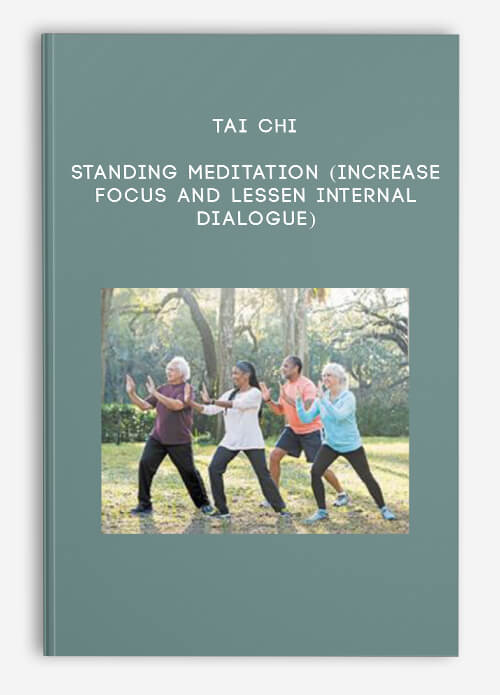
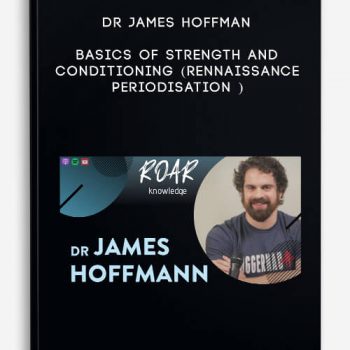
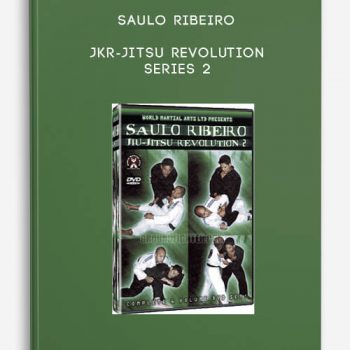

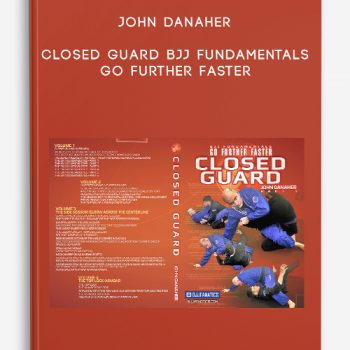
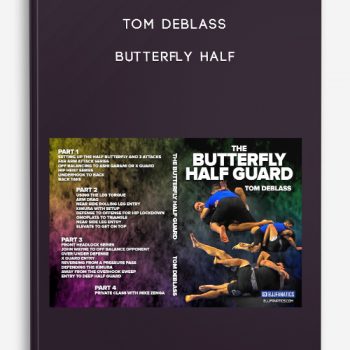
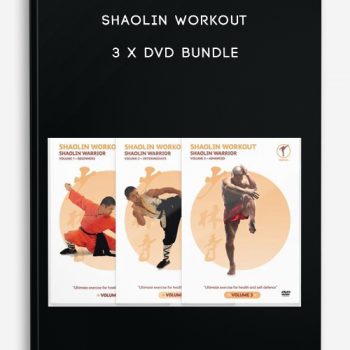

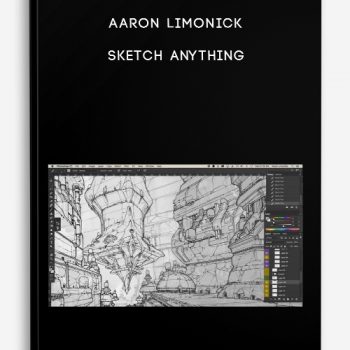

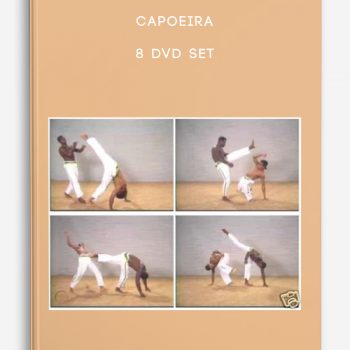
Lord –
This is Digital Download service, the course is available at Coursecui.com and Email download delivery.